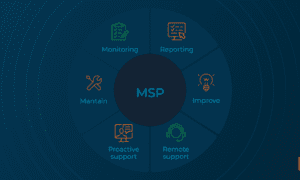Winning a personal injury case is a huge relief after a long legal process. But many people wonder how the settlement money is divided once the case is over. Before you receive your portion, several deductions are made to cover legal fees, court costs, and medical expenses.
Typically, your lawyer receives the settlement check, deducts agreed-upon fees and costs, and then sends you the remaining amount. Reviewing this settlement breakdown helps ensure all charges are accurate and that you get your fair share.
So, how are personal injury settlement funds divided?
-
Attorney’s Fees
The first deduction usually goes to your attorney. Most personal injury lawyers work on a contingency fee basis, meaning they’re only paid if you win. These fees typically range from 25% to 40% of your settlement, depending on the case’s complexity and whether it went to trial.
Cases that settle early often mean lower fees, while cases that require extensive litigation or appeals may lead to higher percentages. Always review your fee agreement carefully before hiring an attorney, and ask for an estimate upfront to avoid surprises later. Keep a copy of the fee agreement handy and track how each payment is calculated to ensure transparency.
-
Case Expenses
Next come the costs incurred during your case. These may include court filing fees, expert witnesses, accident reconstruction, medical records, and investigation expenses.
Some lawyers deduct these costs before taking their contingency fee, while others do it afterward, and that difference can affect how much you take home.
Request an itemized statement from your attorney showing exactly how each expense was handled. Keeping copies of major receipts can also help you track how funds were spent. Ask your attorney which expenses are negotiable or avoidable to potentially reduce your overall case costs.
-
Medical Bills and Liens
Medical providers who treated your injuries will likely expect payment from your settlement. Sometimes, they or your insurer may file a lien to ensure reimbursement.
Your attorney can often negotiate to reduce these bills, especially if medical costs are high compared to your total recovery. Properly managing these liens ensures your debts are paid without taking more than necessary from your settlement.
Always confirm that all medical bills are cleared after payment to avoid future collection issues. Keep a personal record of all medical treatments and payments so you can quickly verify any discrepancies.
-
Insurance or Government Program Reimbursement
If programs like Medicare, Medicaid, or private insurance paid for your medical treatment, they must be reimbursed from your settlement under federal and state laws. Your attorney may negotiate or file hardship claims to lower these payback amounts.
Reviewing these reimbursements with your lawyer ensures that repayment terms are correct and that you’re not giving up more of your settlement than required. Confirm with your attorney that all liens and reimbursements are documented in writing to prevent future claims.
-
Your Final Payout
After attorney fees, litigation costs, medical bills, and reimbursements are deducted, the remaining amount is your net settlement, the money you actually receive. This payout compensates you for pain and suffering, lost wages, and other damages.
Your attorney should provide a detailed settlement breakdown showing each deduction, so you know exactly how every dollar was used. When you get your final payment, review this breakdown carefully.
Ask questions about any charges or numbers you don’t understand, and don’t agree to anything until you’re satisfied with the explanation. Set aside a small portion of your payout for unexpected expenses to avoid financial stress after your settlement.
Conclusion
Understanding how your settlement money is divided helps you stay informed and avoid surprises. While attorney fees and medical costs reduce the total, a skilled lawyer often helps increase your overall payout. Reviewing the details ensures you leave the case confident, both financially and emotionally.
- Your lawyer’s fee, usually 25–40%, is deducted first and depends on case complexity.
- Case costs like court fees and expert witnesses are deducted and should be tracked carefully.
- Medical bills and liens may reduce your settlement, but your lawyer can negotiate them.
- Insurance or government reimbursements must be paid, often negotiated to minimize deductions.
- The remaining net settlement is your payout, which should be reviewed and planned for.































